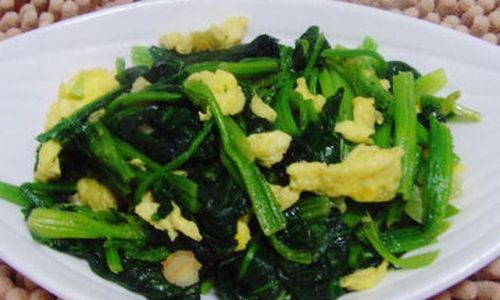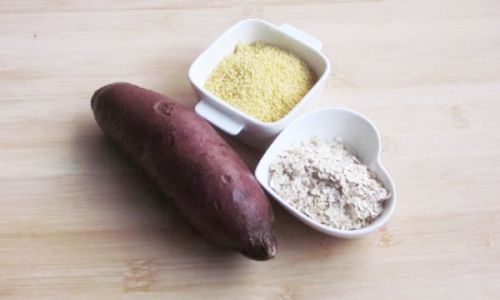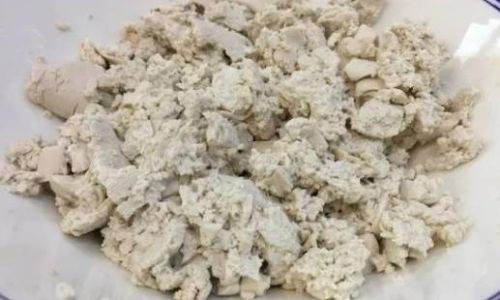Table of content
Stir-fried spinach and eggs, a humble yet beloved dish in many cuisines, combines the earthy freshness of spinach with the rich creaminess of eggs. Often hailed as a quick, nutritious, and delicious meal, this recipe is a staple in households worldwide. Whether you’re a novice cook or a seasoned chef, mastering the nuances of this dish can elevate your home-cooked meals. This article delves into the techniques, ingredients, and secrets behind creating a restaurant-quality stir-fried spinach and eggs that balances texture, flavor, and nutrition.
The Appeal of Stir-Fried Spinach and Eggs
Before diving into the recipe, it’s essential to understand why this dish resonates with so many. Spinach, a leafy green powerhouse, is packed with iron, vitamins, and antioxidants, while eggs provide high-quality protein and healthy fats. Together, they create a harmonious blend of flavors and textures—the tender spinach leaves contrast with the fluffy, custard-like eggs, all enhanced by a hint of garlic or ginger. This dish is versatile too; it can be served as a side, a main course, or even stuffed into wraps for a portable meal. Its simplicity also makes it ideal for busy weeknights or lazy weekends.
Ingredients: Quality Matters
The foundation of any great dish lies in its ingredients. For stir-fried spinach and eggs, freshness is non-negotiable. Here’s a breakdown of what you’ll need:

- Spinach (300–400 grams): Opt for fresh, crisp leaves. Avoid wilted or slimy bunches. Baby spinach works well for a milder taste, while mature spinach offers a robust flavor.
- Eggs (4–5 large): Use free-range or organic eggs for a richer yolk and creamier texture.
- Aromatics: Garlic (3–4 cloves) or ginger (1-inch piece) adds depth. For a twist, try shallots or spring onions.
- Oil: Neutral oils like vegetable or peanut oil are ideal for high-heat cooking. Sesame oil can be drizzled at the end for a nutty finish.
- Seasonings: Salt, white pepper (for a subtle heat), and a pinch of sugar to balance bitterness. Optional additions include soy sauce, oyster sauce, or a dash of rice vinegar.
- Optional Extras: A sprinkle of toasted sesame seeds, crushed red pepper flakes, or a handful of chopped cilantro can elevate the dish.
Step-by-Step Preparation
Prepping the Spinach
- Washing: Rinse spinach thoroughly under cold water to remove grit. Spin dry or pat gently with a kitchen towel. Excess moisture can turn the dish soggy.
- Trimming: Remove tough stems if using mature spinach. Baby spinach can be cooked whole.
- Blanching (Optional): For a tender texture and vibrant green color, briefly blanch the spinach in boiling water for 10–15 seconds, then shock it in ice water. Squeeze out excess liquid. This step is optional but recommended for large leaves.
Preparing the Eggs
- Whisking: Crack eggs into a bowl, add a pinch of salt and white pepper, and beat until frothy. For extra fluffiness, add a splash of milk or water (1–2 teaspoons).
- Aeration: Whisk vigorously to incorporate air, creating a lighter texture. Avoid overbeating, as this can make the eggs tough.
Cooking the Aromatics
- Heat 1–2 tablespoons of oil in a wok or large skillet over medium-high heat. Add minced garlic or ginger and stir-fry for 30 seconds until fragrant but not browned.
Cooking the Eggs
- Pour the beaten eggs into the hot pan. Let them sit for 5–10 seconds to set slightly, then gently push the edges toward the center with a spatula, allowing uncooked egg to flow to the edges. Continue this motion until the eggs are mostly set but still slightly runny. Remove from the pan and set aside. Overcooking here will result in dry eggs.
Stir-Frying the Spinach
- Add a touch more oil to the pan if needed. Toss in the spinach and stir-fry for 1–2 minutes until just wilted. Overcooking will release excess moisture and dull the color.
- Season with a pinch of salt and sugar. If using soy sauce or oyster sauce, add it now for umami depth.
Combining Eggs and Spinach
- Return the eggs to the pan and fold gently into the spinach. Toss lightly to combine without breaking the eggs into small pieces. The goal is to create pockets of fluffy egg amidst the spinach.
- Adjust seasoning to taste. A drizzle of sesame oil at this stage adds aromatic complexity.
Final Touches
- Transfer to a serving dish and garnish with sesame seeds, red pepper flakes, or chopped herbs. Serve immediately with steamed rice or noodles.
Tips for Perfection
- Heat Control: A hot wok ensures quick cooking, preserving the spinach’s color and crispness. If the pan isn’t hot enough, the spinach will steam instead of stir-fry, leading to sogginess.
- Egg Texture: The key to velvety eggs is undercooking them slightly before combining with the spinach. Residual heat will finish cooking them gently.
- Seasoning Balance: Spinach can be slightly bitter, so a pinch of sugar helps mellow it out. Taste and adjust seasonings before serving.
- Moisture Management: Excess liquid is the enemy of a good stir-fry. Ensure spinach is thoroughly dried, and avoid covering the pan during cooking.
- Variations: Experiment with additions like sautéed mushrooms, diced tomatoes, or crispy tofu for texture. For a spicy kick, add a sliced chili pepper with the garlic.
Common Mistakes to Avoid
- Overcrowding the Pan: Cook in batches if necessary. Overcrowding lowers the pan’s temperature, leading to steaming instead of stir-frying.
- Using Old Spinach: Wilted spinach releases more moisture and lacks vibrancy. Always opt for fresh leaves.
- Skipping the Blanch: While optional, blanching spinach ensures even cooking and a bright green hue.
- Overseasoning: Let the natural flavors shine. Start with minimal salt and adjust gradually.
Cultural Adaptations
This dish transcends borders, with each culture adding its unique twist. In Chinese cuisine, a splash of soy sauce and a pinch of MSG might be used. In Korean kitchens, sesame oil and gochugaru (red pepper flakes) are common. For a Mediterranean flair, toss in feta cheese and olives. The beauty of stir-fried spinach and eggs lies in its adaptability—it’s a canvas for your culinary creativity.
Health Benefits
Beyond its delicious taste, this dish is a nutritional powerhouse. Spinach is rich in iron, folate, and vitamins A and K, while eggs provide choline for brain health and lutein for eye protection. Together, they form a low-calorie, high-protein meal that supports muscle repair, immune function, and overall well-being.

Conclusion
Stir-fried spinach and eggs is more than a quick meal—it’s a testament to the magic of simplicity. By focusing on fresh ingredients, precise cooking techniques, and a balance of flavors, even a novice can create a dish that rivals restaurant offerings. Whether you’re cooking for one or feeding a family, this recipe delivers comfort, nutrition, and a touch of culinary artistry. So grab your wok, crack those eggs, and let the sizzle of spinach fill your kitchen with the promise of a delicious meal.






0 comments